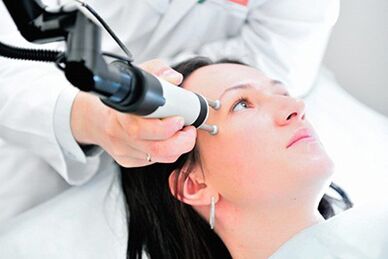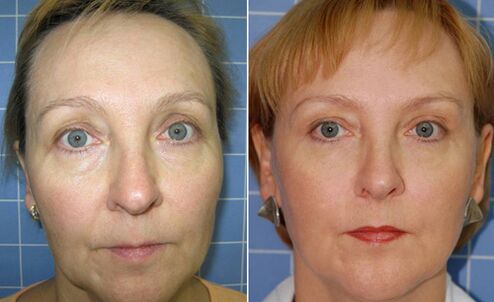
Laser facial rejuvenation is one of the most sought after and popular procedures in the modern beauty industry. This technique has gained positive feedback and recognition from thousands of patients, thanks to the ability to obtain a quick and pronounced recovery result. It should be remembered that the effect of the laser may be different. Today we will talk about a procedure such as fractional thermolysis, a new word in the fight against skin aging and the signs of aging.
Indications
Partial thermolysis can be used to solve a number of problems. It should be noted that it is rarely used as a prophylactic, but its use is suitable for both mature and young skin.
First, direct indications of conducting are wrinkles and moderate creases in the face or neck. Among other things, the procedure helps to prevent age-related changes such as:
- increased pigmentation;
- release of soft tissue, floating contour of the whole face or any individual area (cheeks, chin, area below and above the eyes).
Fractional laser is also used to treat new skin if it increases oiliness or dryness, the presence of peeling or enlarged pores, the tendency to form pimples, as well as combat their effects.
This method is often prescribed accurately by beauticians to remove pimples and scars. Reviews of real people who have performed thermolysis indicate that they were able to get rid of skin defects after the procedure.
Principle of technique
Partial skin regeneration is characterized by a fairly simple principle of operation.The laser beam used to treat the problem area creates microscopic cracks in the surface layers of the dermis. Healing over time stimulates the activation of internal healing processes, mobilizes all the forces of the body.
Instead of small wounds, components such as elastin and collagen are produced. They are responsible for the level of elasticity, the tightening of the skin, and the production of new, younger and healthier cells.
How long does the effect last?
Fractional thermolysis can be performed once or as a course, it all depends on the condition of your skin and what final effect you expect. The longest, long-lasting result can be obtained in the case of 3-5 sessions. Expert comments indicate that in this case, positive changes may persist for 3 to 5 years.
How does the procedure work?
A partial laser treats the problem areas for about 40 minutes. During the movement of the beam, the patient experiences a slight burning sensation or tingling, but he does not have severe pain. Prior to the procedure, the skin is cleansed and treated with an antiseptic to remove germs from its surface. The next step is to gently restore the skin, remove the top layer, apply microscopic cracks. Local anesthesia is used to reduce discomfort. Following the procedure, it is recommended to follow the rules of the recovery period.

Advantages of the technique
What are the main advantages of such procedures, such as fractional thermolysis? Having researched many patient as well as professional reviews, we can conclude the following benefits:
- Versatility. The technique is suitable for absolutely any patient, regardless of factors such as age, gender, skin type and degree of sensitivity.
- Practicality. The blow can be used to treat any part of the body and face.
- Minimal side effects (no risk of infection).
- High and operational efficiency. The assigned tasks can be solved with the help of a laser even in one procedure.
Possible side effects
The fractional laser is a powerful enough remedy. Significant redness, slight swelling and soreness are observed for several days after the procedure. You can reduce the discomfort by using cool compresses or special ointments prescribed by a specialist.
If skin peeling appears, do not try to remove it with a scrub. In addition, it is recommended to avoid intense sunlight for several months.

The main contraindications
Let's find out in which cases laser thermolysis can be strongly contraindicated? I would like to point out at once that it is categorically not advisable to ignore such restrictions, as this can provoke the development and complications of existing diseases. Therefore, the procedure is not performed in the following cases:
- oncological diseases;
- diabetes;
- herpes, dermatitis, another allergic reaction in the treated area;
- pregnancy;
- breastfeeding.
Fractional lasers are not used to treat the skin and, if treated with self-tanning, have recently been subjected to aggressive peeling or significant ultraviolet radiation.
Before and after photos


Update price
Laser thermolysis is a rather expensive procedure if a course effect is used. Many patient reports indicate that refusing such treatment was associated with extremely high costs. This statement is quite contradictory. Please note that many cosmetic procedures provide a short-term effect (up to one year). With the help of a laser, significant changes can be achieved in a very long period of time.
Partial thermolysis is a gentle laser procedure used to remove wrinkles, ptosis and scars. Therapy can be given once or as a course, in the latter case the effect of its use lasts for several years. The procedure is characterized by a minimal number of side effects and an excellent result.














































































